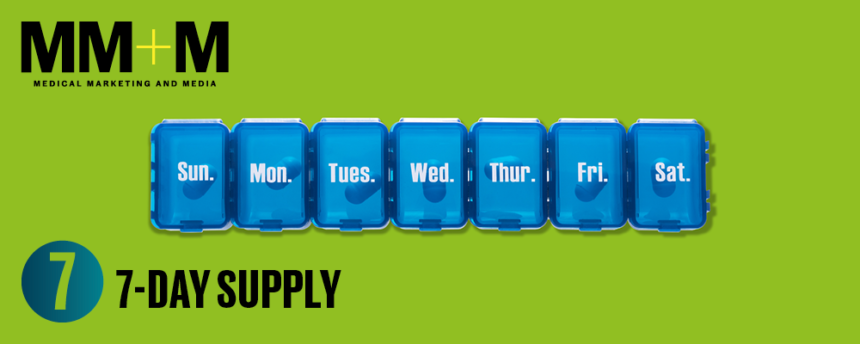Over the summer, a number of drugmakers joined a temporary Facebook ad boycott motivated by the platform’s lack of progress combating hate speech and misinformation. Six months later, in what may be a continuation of industry’s earlier media strategy, multiple pharma brands have halted paid content on Twitter.
A fairly significant ad pause was seen on Twitter following the January 6 storming of the Capitol. Prior to the riot, 21 Rx pharma brands were advertising on Twitter, according to social media tracking firm PranifyRx. Just a day later, six of those brands (29%) paused ads on Twitter and have yet to resume.
The 21 represent less than 10% of the roughly 380 pharma brands the firm tracks, most of which advertise on non-Twitter platforms. “Pharma overall is relatively slow to adopt Twitter as an ad channel,” noted PranifyRx CEO Ian Orekondy.
Nevertheless, those that did have a presence are steering clear for the time being, following this month’s heated series of events in the nation’s capital. Two days after the riot, Twitter permanently banned former President Donald Trump.
Eleven other platforms swiftly cracked down on him. But even following Trump’s exile from his favorite digital sounding board, his final two weeks in office were a media minefield for healthcare marketers.
Two of the aforementioned brands – Novartis’ Votrient and Eli Lilly/Boehringer Ingelheim’s Jardiance – appear to have permanently deleted their Twitter accounts, although at least in one case the decision was unrelated to the riot. A Novartis spokesperson said the company’s decision to deactivate the Votrient Twitter account was made prior to Jan. 6 “based on a strategic review of the range of Votrient communications with healthcare professionals.”
Lilly/BI did not respond to a request for comment regarding Jardiance. Others that remain paused as of today are Novartis’ Cosentyx, GlaxoSmithKline’s Zejula and two very small brands from rare disease companies, according to PranifyRx.
When asked about how pharma brands have handled campaigns the last two weeks, a spokesperson for Twitter refuted the notion that accounts that paused around Jan. 6 have not come back on, saying that no health brands are currently paused on the platform. The spokesperson noted that it does provide opportunities for brands to connect to the conversation even during moments that they may not consider “brand safe.”
It’s natural to compare the moves with last July’s ad boycott of Facebook, which was partly motivated by activism but also pragmatism. Several pharma companies told MM+M at the time that they sought to align with the #StopHateForProfit or #BlackLivesMatter movements.
But most companies that paused then likely acted out of a desire to dodge short-term controversy. “We don’t know from most of the brands because we didn’t hear from them, but by their behavior – most turned back on in August – it’s clear that many of the brands were motivated by safety,” said Orekondy.
In fact, all the brands that joined the boycott were back live on the platform by August 28, he said. That supports the perspective that the ad pauses on Facebook last year – and most of the current Twitter ad pauses – are temporary brand-safety strategies.
“Taking a pause from platforms doesn’t reflect a long-term change in media investment, but rather a short-term step to avoid controversy and potential unrest that might detract from the intent of messaging – to impact patients and health outcomes during a very heated, concerning and transitional time,” noted Jan Weinstein, EVP of media at Publicis Health Media.
Brand safety protocols typically allow clients options ranging from full pause of activity to adjusting content filters to avoid certain genres (e.g., news) to increased monitoring, she added.
In the case of social media, so much of the content involves politics and opinion that, for certain advertisers, the safest route is often to pause during times of unrest. What makes those times particularly volatile for brands is that even non-political commentary, posts or tweets “often get caught up in unrelated and polarizing discussions at times when people want their voice to be heard,” Weinstein continued.
While the reaction among pharma brands may have been most pronounced on Twitter, it spread to other platforms as well. A number of Rx pharma brands (13, to be precise) temporarily halted Facebook ads following the Capitol riot, PranifyRx data shows. These include Takeda, which paused all brand advertising, along with brands from Bristol Myers Squibb (Zeposia), Eli Lilly (Trulicity) and Otuska (Rexulti). All 13 brands have since returned.
Orekondy said he’s seeing the majority of pharma brands staying live across other non-Twitter channels, such as Google, Instagram, display and TV. As to why Twitter was singled out this time, Weinstein has a theory.
Any time there is an event or series of events that can skew toward division – as in the case of the tense period encompassing the riot, Twitter’s Trump ban and the run-up to the inauguration, there is a chance brands may want to step back, she observed. “Controversy does not favor brand presence in these types of situations.”
This story has been updated with a response from Twitter.







